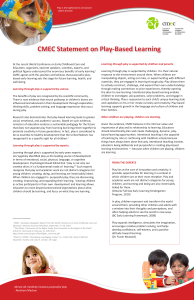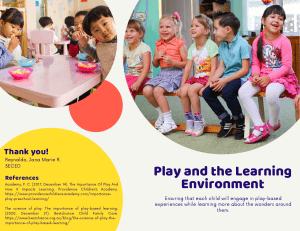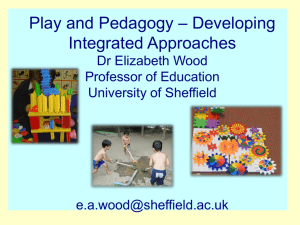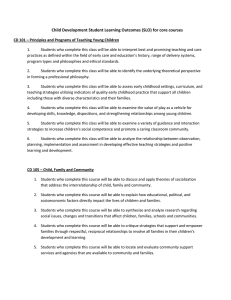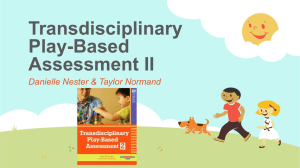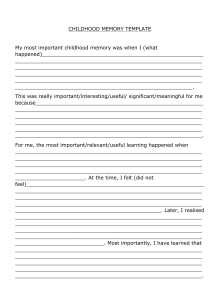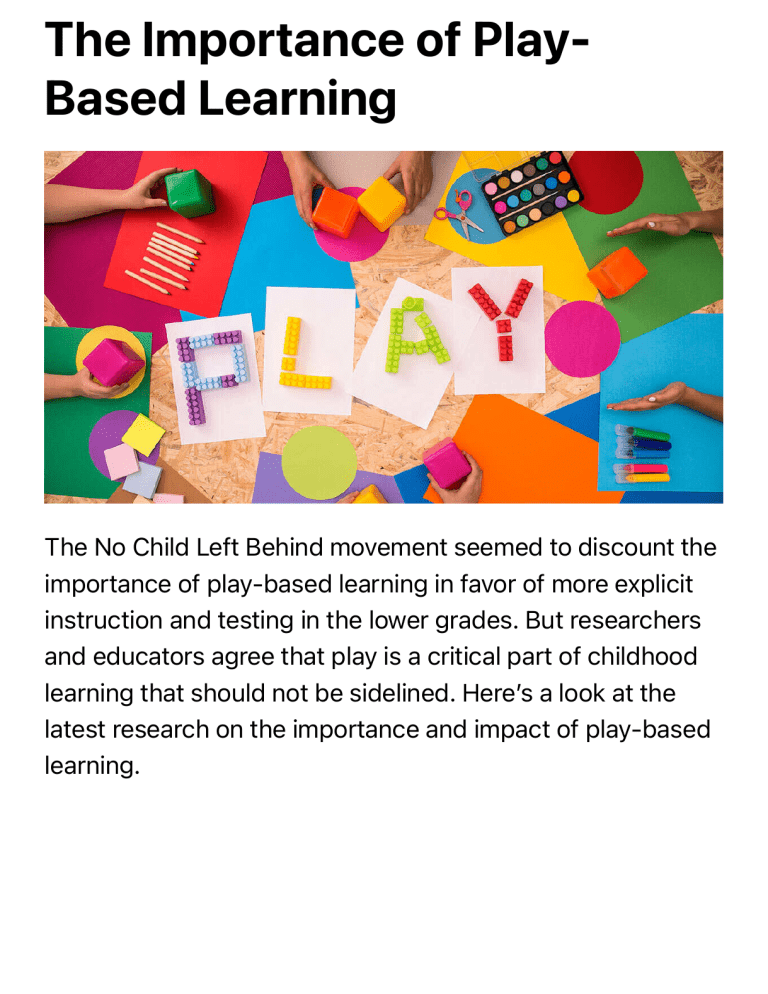
The Importance of PlayBased Learning The No Child Left Behind movement seemed to discount the importance of play-based learning in favor of more explicit instruction and testing in the lower grades. But researchers and educators agree that play is a critical part of childhood learning that should not be sidelined. Here’s a look at the latest research on the importance and impact of play-based learning. The science of play A great deal of research has concluded that play-based learning is genuinely and positively impactful on student learning and development. Kathryn Hirsh-Pasek, a wellknown child development expert in the Department of Psychology at Temple University and a Senior Fellow at the Brookings Institution, argues that humans learn best when at least one of these four pillars are present: 1. Individuals take an active role in the learning environment 2. They are engaged 3. Information is meaningful 4. Learners interact in a social context This means that children learn well when they are mentally active, engaged, social, and can make meaningful connections to their lives, which are all characteristics of play. Another study found that “in addition to improving play skills and narrative language ability,” a play-based curriculum also had “a positive influence on the acquisition of grammar.” Neuroscientists have found that play activates the brain in meaningful ways that rote memorization, testing, worksheets, and traditional classroom techniques do not. “When you are engaging in play, which in and of itself is a symbolic metaphor in its truest form, whole parts of your brain are engaged, developing crucial connections that lead to a positive development of the child,” says Clair Mellenthin, author of Play Therapy: Engaging & Powerful Techniques for the Treatment of Childhood Disorders. Beyond stimulating young minds to be receptive to learning, play is a necessary component of brain development for children. “Not only is it an incredible source of fun and socialization, but play is also crucial to children’s learning and development. Their intellectual, physical, and socialemotional abilities emerge and are strengthened through play,” says Katie Chiavarone, blogger and author of The Undeniable Power of Play: 101 Tips, Activities and PlayBased Learning Strategies to Engage Your Child. “It is in the context of play that children test out new knowledge and theories. They reenact experiences to solidify understanding. And it is where children first learn and express symbolic thought, a necessary precursor to literacy. Play is the earliest form of storytelling. And, it is how children learn how to negotiate with peers, problem-solve, and improvise.” Play-based learning is real learning The assumption that play is a frivolous use of classroom time and in opposition to rigorous instruction demeans its value and its vast potential. “Many people, including some educators, believe that we need to choose between playbased learning opportunities and rigorous academic standards when integrating the two is very possible,” says adjunct professor, Angie Stratton, M.A.Ed. “For example, a kitchen/cooking center could contain a water table as well as measuring cups, dishes and ‘pretend’ food. Paper and pencils/crayons/markers, etc., can be used to write recipes, make lists, and create advertisements for a new restaurant. The creative possibilities are endless. Not only does this play-based learning center address language arts standards, but it also touches upon speaking and listening standards as well. Intentionally structuring a play-based learning opportunity to encourage creative play as well as include materials that emphasize a developmentally appropriate learning standard is certainly a high-leverage practice.” Purposeful play Play is not an obstruction to academic learning, nor is it lazy teaching. Purposeful play experiences can be constructed to create deeper learning experiences that a child will remember and internalize. “High-quality classrooms that utilize play-based, hands-on learning activities are wellthought-out, intentional spaces — not just a free-for-all where the children jump from activity to activity and a teacher is disengaged and spends his/her day managing behaviors,” says early childhood educator, Tina Gabel, MEd. “In an exceptional play-based atmosphere, there are no worksheets to showcase understanding and learning; instead, the formal documentation is gathered through learning stories, anecdotal notes, and photo assessments.” Lauren Harness, MEd, agrees. “When people say ‘playbased learning,’ I think what they go to is: ‘Just put them in a room with a bunch of toys and let them go at it. There you go, that’s play-based learning.’ But really purposeful play should be in classrooms, especially in a kindergarten classroom. In children’s brains, when they’re playing, they’re doing the deepest learning. We know that through Piaget, Vygotsky, and all those good theorists who talk about the importance of play with young children. The different levels of learning that they’re able to get into during play is a lot deeper than pulling out a worksheet and having them fill in bubbles and that sort of thing.” The classroom space as a teacher When play-based learning is done well, the classroom becomes a teacher. “Play-based learning at its finest utilizes the environment as a third teacher, in conjunction with the students and classroom facilitator. A place where every activity and object placed in the space has a purpose, adds to the learning, and helps scaffold information across the learning domains,” says Gabel. “Play-based learning in my classroom looks like a small group of students creating structures in the block area, while others are working in the art, science, and library areas. The conversation among students is about the new facade being put on the building across the street from our school. The students are recreating what they have seen outside of our immediate environment. Another student decides to join, where the children remind her ‘only 4 at a time in blocks.’ She then counts how many are already in the block center by matching students to the fingers she begins to hold up, and decides that she can join ‘because 3 and 1 are 4, right Mrs. Gabel?’ It is through these rich experiences and conversations that I am able to discern her concrete understanding of whole numbers.” That sure sounds a lot more engaging and authentic than a workbook quiz. Play on. You may also like to read Diverse Learning Styles in Early Childhood Education Three Websites For Project-Based Learning Explanation of Brain Based Learning Early Childhood Education: Striving to Balance Play with Academics Early Childhood Education Options for Low-Income Families Teaching Children Kindness & Empathy Using SocialEmotional Learning Tags: Early Childhood and Elementary (Grades: PreK-5), Early Childhood Education, Engaging Activities
